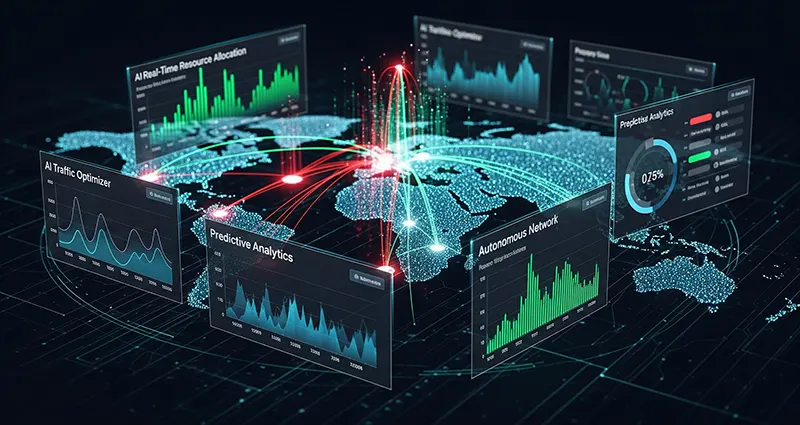In today’s fast-paced digital world, efficient network traffic management and resource allocation are critical to ensure seamless connectivity and optimal performance. With the exponential growth in data consumption, diverse applications, and connected devices, traditional methods of network management are no longer sufficient. Enter Artificial Intelligence (AI) — offering powerful tools that can analyze, predict, and optimize network operations in real-time. This article explores the best AI tools for optimizing network traffic and resource allocation, highlighting how they transform modern network management.
Why AI Matters in Network Traffic Optimization
Network traffic is inherently dynamic and complex, influenced by varying user behaviors, applications, and external factors. Manual monitoring and configuration often result in suboptimal performance, congestion, and increased latency. AI leverages machine learning algorithms, predictive analytics, and automation to continuously monitor network conditions, detect anomalies, and dynamically adjust traffic flows and resources. This leads to improved Quality of Service (QoS), reduction in downtime, and better user experiences.
Top AI Tools for Network Traffic and Resource Optimization
- Cisco DNA Center
Cisco DNA Center integrates AI and machine learning capabilities to automate network management tasks. Its AI-driven analytics help optimize traffic routing, predict congestion, and allocate bandwidth efficiently. Real-time insights empower network administrators to proactively address issues before they impact end-users. - Juniper Mist AI
Juniper’s Mist platform uses AI to simplify network operations and enhance performance. It provides AI-powered insights for traffic management, anomaly detection, and client-level visibility. The tool automates resource allocation, ensuring devices get the necessary bandwidth depending on priority and usage patterns. - NetBrain
NetBrain applies AI-driven network automation combined with real-time data to provide dynamic traffic optimization and resource allocation. It automatically discovers network topology and utilizes AI to predict potential bottlenecks, enabling timely adjustments without manual intervention. - Nokia AVA
Nokia AVA leverages AI for network analytics and automation in telecom environments. It uses machine learning to optimize network traffic, anticipate demands, and allocate resources dynamically. Its closed-loop automation ensures networks adapt instantly to real-time changes. - Aruba ESP (Edge Services Platform)
Aruba ESP incorporates AI to optimize traffic and manage resources at the network edge. It offers continuous monitoring, anomaly detection, and predictive analytics that help dynamically prioritize traffic and allocate bandwidth, ensuring high network efficiency.
Features to Look for in AI Network Optimization Tools
- Real-Time Analytics: Ability to analyze traffic and network conditions instantaneously.
- Predictive Modeling: Forecasting traffic spikes and potential bottlenecks before they occur.
- Automation: Automatic adjustment of routing and allocation without human intervention.
- Anomaly Detection: Identifying unusual traffic patterns that could indicate security threats or faults.
- Scalability: Capable of handling growing network complexity and device numbers.
Benefits of AI-Driven Network Optimization
- Enhanced Network Performance: Reduced latency and congestion improve overall user experience.
- Cost Savings: Efficient resource utilization means better ROI on network infrastructure investments.
- Reduced Downtime: Proactive issue detection and resolution minimize service interruptions.
- Improved Security: AI detects irregular patterns that may signal cyber threats, enabling faster responses.
Optimizing network traffic and resource allocation is paramount for maintaining robust, high-performing networks. The best AI tools leverage the power of machine learning, real-time analytics, and automation to transform how networks operate — moving from reactive to proactive management. As networks continue to grow in scale and complexity, adopting AI-powered solutions like Cisco DNA Center, Juniper Mist AI, and Nokia AVA will be critical for businesses seeking agility, efficiency, and resilience in their network infrastructure.
By embracing these cutting-edge AI tools, organizations can ensure their networks not only meet today’s demands but are also future-ready for the evolving digital landscape.











